Exploring the great outdoors requires not only a spirit of adventure but also a good understanding of the tools, equipment, and terminologies that are part of the camping experience. you are a seasoned camper or a novice planning your first trip, familiarizing yourself with this camping glossary will enhance your preparedness and ensure a more enjoyable and safe journey.
Detailed guide covering essential camping terms and equipment, along with some valuable tips and insights.
Camping Words
Tents and Shelters

Buy the VEVOR 6-person camping tent for easy setup, waterproof shelter, and comfortable camping adventures!
A-frame Tent: Shaped like an inverted V with one or two poles at each end, A-frame tents are classic and straightforward, offering reliable shelter.
Breathable fabrics allow air to pass through them easily. This means they won't trap heat and will help you stay cool.
the canopy is the (usually mesh or breathable) ceiling. It's different from the rain fly, which is the waterproof outer layer. Don't mix them up!
I-pole tent: A tent featuring a single vertical pole for support at each end.
Double-wall Tent: These tents have an inner breathable taffeta canopy and an outer waterproof ripstop fly. They offer excellent weather protection and ventilation.
Ripstop nylon: Made from lightweight nylon, ripstop fabric features thicker threads woven in a grid pattern every quarter inch or so. While more tear-resistant than taffeta, it's less able to withstand scraping or friction.
Bathtub Floor: A design where the tent floor wraps 6 inches or more up the sidewalls before it is sewn in, preventing leaks from ground-level seams.
Sidewall baffle: a panel sewn inside the sleeping bag, opposite the zipper. It prevents the down filling from migrating towards the bottom of the bag during sleep, ensuring even warmth distribution throughout.
Sixty/forty parka: refers to a mountain-style parka, traditionally made from a fabric blend of 60% nylon and 40% cotton. See mountain parka.
Flat-felled seam: Constructed with overlapping fabric. This creates a seam with four layers of material.
Seam sealer: Many camping stores carry a special type of glue designed to waterproof stitching on tents and rain gear. This helps keep water from seeping through the seams, even in heavy rain.
sewn-through construction: Same as quilt construction
Catenary Cut refers to the natural curve formed by a tightly strung rope between two trees. Tents with catenary-cut sidewalls pitch tighter and have less sag.
Cap Fly: A three-quarter-length tent fly that provides some weather protection but is less effective than full-length flies.
Chute cord (slang) = parachute cord
Sou’wester: For centuries, sailors and commercial fishermen have relied on the sou'wester, a timeless rain hat built for tough conditions. This classic design remains unmatched for foul weather protection, boasting ear flaps for warmth, a chin strap for security, and a comfortable flannel lining.
Ridge Vent: A triangular vent at the ridge of A-frame tents for improved airflow.
Snow Flaps: Flaps that extend from the tent's perimeter and are piled with snow to secure the tent without staking are used in winter camping.
Vestibule: An extension or alcove attached to the tent, providing additional storage space for gear out of the weather.
Self-supporting Tent: These tents are designed to stand without stakes, though staking is recommended to prevent them from blowing away.
DEET, a chemical called N,N-diethyl-meta-toluamide, is what keeps bugs away in most insect repellents.
Bean boots is a nickname for the Maine Hunting Shoe. This iconic boot, with a leather upper and rubber sole, was invented by L.L.Bean.
Dining fly: A tarp set up above an area to provide shelter from rain. The name comes from its use specifically for protection during meals.
Sleeping Gear
Sleeping Bag Types:
Baffle: Fabric panels inside a sleeping bag to keep insulation in place. It's crucial for down-filled bags.
Differential Cut: A design where the inner shell of the sleeping bag is smaller than the outer shell, creating a Thermos-bottle effect for better insulation.
Loft: The thickness of a sleeping bag when fluffed. A higher loft generally means more warmth.
Overlapping V-tube Construction: A design with V-shaped tubes overlapping each other to secure down insulation, used in hot winter sleeping bags.
Quilt construction: Some sleeping bags use a quilt-like construction where the insulation is stitched directly into the bag. This is a cost-effective way to make lightweight sleeping bags for warm weather. For colder temperatures, you'll need a double-quilted version for better insulation.
Semimummy Bag: A sleeping bag with a barrel shape and no hood, providing more space than a mummy bag but more warmth than a rectangular bag.
Space-filler Cut: Sleeping bags come in two main cuts: space-filler and differential. In the space-filler design, both the inner and outer shells are made from the same sized piece of fabric. This allows the insulation and liner to drape more naturally around your body, avoiding the constricting "Thermos bottle" shape of a differential cut bag (where the outer shell is larger than the inner).
hollow-ground knife: This type of knife features a concave bevel on the edge. This creates a thin, razor-sharp cutting surface while maintaining a strong, stiff spine.
Sleeping Pads:
Foam Pad: Made of open or closed-cell foam, these pads provide insulation from the ground.
EVA (Ethyl Vinyl Acetate): A firm, resilient closed-cell foam for high-quality trail mattresses.
Additional Sleeping Bag Features:
Draft Tube: A down-filled tube along the zipper to prevent cold air from seeping through.
Hood Closure: A tie cord and fastener to secure the hood around the sleeper's face.
Frost Liner: A detachable inner roof for a tent to absorb moisture, preventing it from condensing and freezing.
A bivouac is a basic, temporary shelter used outdoors, often set up quickly in an unplanned location.
Geodesic domes: More than just tents, these hemispherical structures feature a remarkably strong framework made of interlocking struts, often using aluminum tubing. Their efficient design earns them the title of "The Cadillacs of domes."
Cooking and Food Preparation
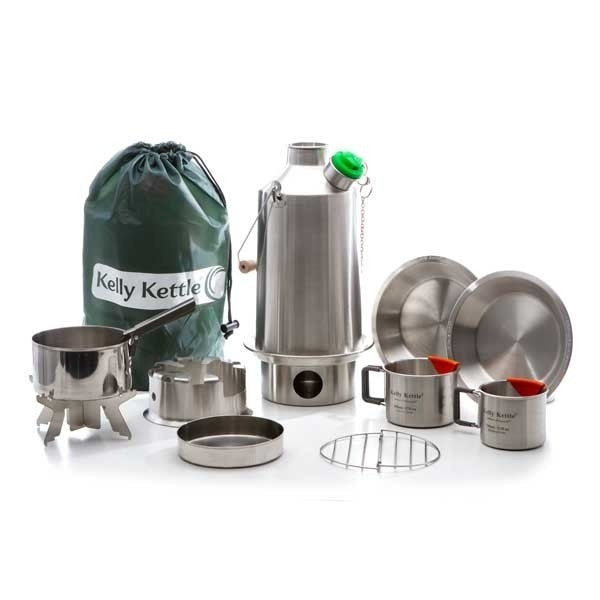
Buy the Kelly Kettle® Ultimate Base Camp Kit – Stainless Steel Camp Kettle for a complete outdoor cooking solution.
Billy Can: A straight-sided cooking pot with a wire bail, commonly used over a campfire.
Dutch Oven: A heavy-walled pot with a lid that allows coals to be placed on top, providing top-down heat for baking.
Moleskin: A soft, adhesive bandage used to prevent blisters. The sticky side is applied directly to unbroken skin over the blister-prone area, while the cushioned surface absorbs friction from socks and boots.
Gelatin-mold Oven: An oven made from a large-ring aluminum gelatin mold used for baking over an open flame.
Reflector Oven: Made of aluminum sheet metal, this Oven bakes food by reflecting heat from a campfire.
Mocha: A popular camp beverage made by mixing hot chocolate and coffee.
Bannock: Traditional trail bread made in a skillet by frying and reflective baking.
Fuel Bottle: Typically refers to Sigg aluminum bottles for storing gasoline or kerosene.
Poly bottle: Short for polyethylene bottle.
Navigation and Orientation
Buy FNIRSI Radiation Dosimeter with Safecastle Multipurpose Toolkit Card for radiation detection and multi-tool functionality.
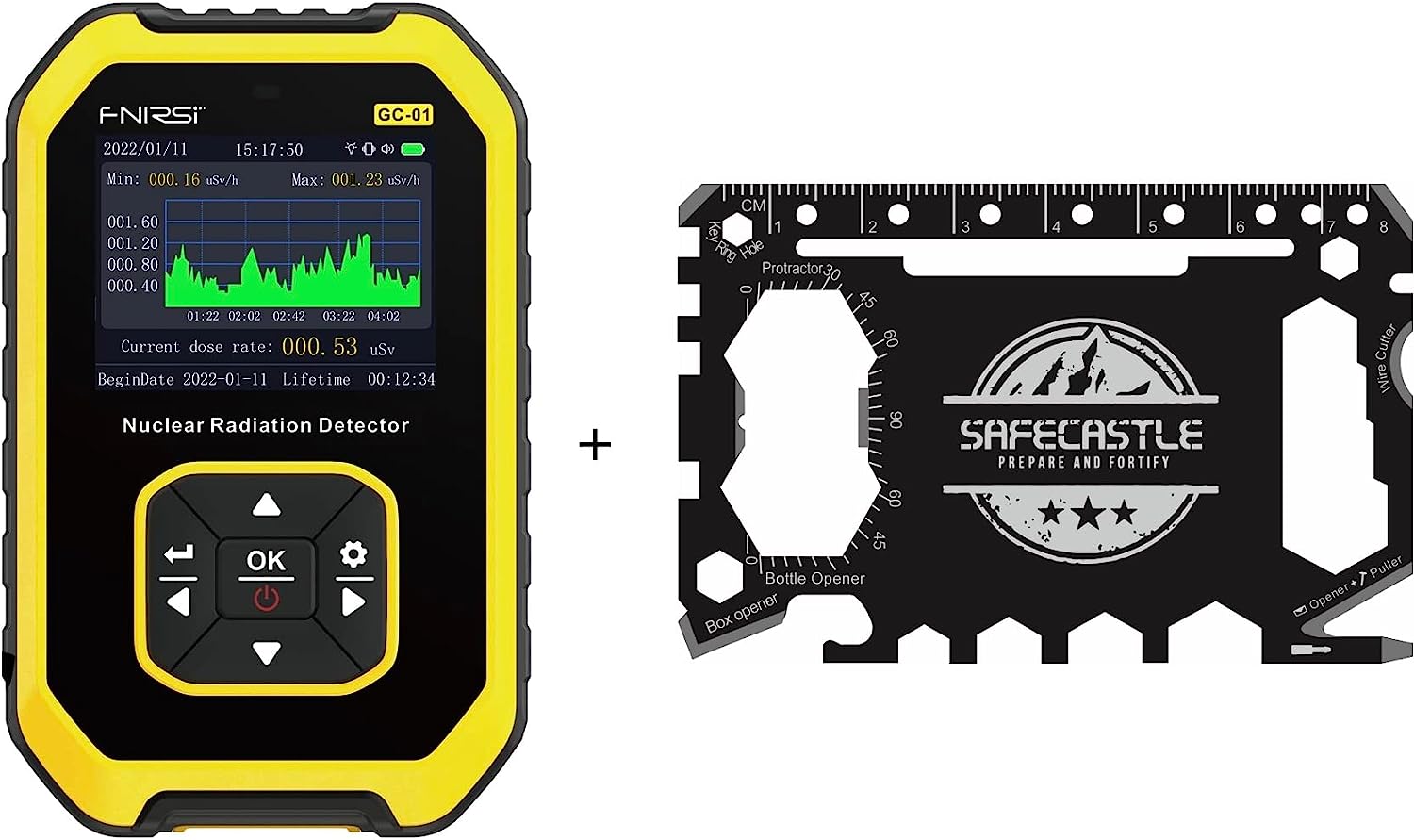
Compass Types:
Agonic Line: A line with zero compass declination, where the compass needle points to both actual and magnetic north.
Declination, also known as variation among mariners, is the angular difference between true (geographic) north and magnetic north. It's expressed in degrees east or west relative to the agonic line.
Azimuth: This is a more precise measurement, using degrees (0° to 360°) or mils to indicate the exact angle from a reference point, typically true north. It's like an address for a location on a compass.
Bearing: This is a simpler way to express direction relative to north or south. It uses cardinal points (north, south, east, west) and may include degrees to provide more detail. Think of it as a directional shorthand.
Cruiser Compass: A needle compass with numbers running counterclockwise for reading bearings at eye level.
Floating Dial Compass: A compass where the needle is part of the numbered dial, allowing the entire unit to rotate.
Giardia intestinalis (previously known as Giardia lamblia or Giardia duodenalis) is the parasite that causes giardiasis.
Giardiasis, a waterborne parasitic illness, is caused by the single-celled organism Giardia. Beavers are frequent carriers of Giardia. The incubation period for giardiasis is one to two weeks.
Beware of Cryptosporidium in your drinking water! This protozoan parasite causes symptoms like giardiasis, making you miserable. While resistant to most chemicals, boiling your water kills these cysts, or filtration removes them.
Lensatic Compass: Features a built-in magnifying lens for easy reading. It is not practical for camping due to the need for built-in protractors.
Prismatic Compass: A high-precision compass with a sighting prism, which is more accurate but less versatile for general use.
Orienteering Compass: Includes a protractor for determining directions from a map without orienting it to the north, ideal for outdoor use.
Orienteering: an international adventure sport that tests your ability to navigate with a map and compass while running cross-country.
GPS (Global Positioning System): handheld device that uses signals from orbiting satellites to pinpoint your location on Earth. Civilian models can determine your position within minutes, with an accuracy of up to 3 meters!
Hip belt: A cushioned belt worn around the hips that connects to a backpack. This belt helps distribute the weight of the pack, making it significantly more comfortable to carry.
Contour Lines: Thin lines on maps connecting points of equal elevation, indicating the lay of the land.
Map Index: A gridded small-scale map listing available maps, their sources, and costs.
Millar mitts: though fingerless gloves favored by mountaineers for technical climbing, are equally adept for activities like fishing, canoeing, and general hiking.
UTM (Universal Transverse Mercator): A metric coordinate grid used on maps, providing more straightforward navigation with decimal-based easting and northing values.
Clothing and Personal Gear
Anorak: A shell parka that pulls over the head with a chest-length zipper or snaps, conserving heat better than full-zip parkas.
Shell (garments): 1. Unlined clothing, and 2. The inner or outer layer of a sleeping bag.
Cagoule: A waterproof, ankle-length, over-the-head parka used by mountaineers featuring tailored hoods and drawstring hems.
Mountain Parka: A full-length coat with a zipper closure that reaches your thighs and has plenty of pockets is called a mountain parka. Traditionally, these parkas were made from a double layer of a fabric blend called 60/40 cloth, which is 60% nylon and 40% cotton, for added warmth. The classic example of a mountain parka is the US Army field jacket.
Quallofil: a synthetic material with exceptional insulating properties, is used in sleeping bags and parkas. Each filament has four longitudinal holes that trap air and add warmth, making Quallofil one of the best synthetic insulators available.
Pile: Super soft and practical, pile fabric (often called fleece) is made from polyester. It excels in cold-weather camping because it absorbs minimal water and dries fast, making it a popular replacement for traditional wool.
Parka: long coats that reach your thighs and have a hood built right in. To keep you warm in cold weather, they can be lined with materials like fur or fleece, or filled with insulating materials like down or polyester.
Polarguard: A synthetic polyester material used in sleeping bags and parkas for insulation.
Vapor-barrier Liner (VBL): A waterproof fabric is worn next to the skin, preventing sweat from dampening clothes and reducing insulation value.
Bug Jacket: A fabric mesh jacket impregnated with insect repellent, protecting against mosquitoes and other insects.
Poncho: While ponchos are known for their good ventilation and ability to fit over backpacks due to their loose, rectangular design, they don't offer the most reliable rain protection.
Gators: Nylon anklets that zip on the side, used by skiers and mountaineers to prevent snow from entering boots.
Starting (or priming) a camp stove involves filling a small built-in cup with a little gasoline or alcohol. This fuel is then lit to heat the main burner. But be careful! Using too much fuel can cause the stove to flare up dangerously.
Wellies(Wellingtons): Knee-high rubber boots, popular in the UK, are used for gardening, hunting, and various outdoor activities.
Knives and Tools
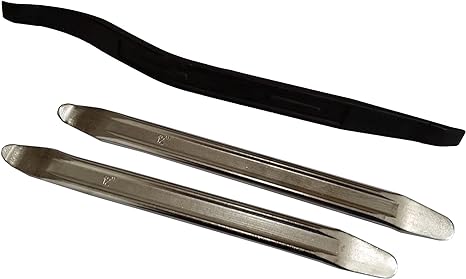
BeadBuster Tire Iron Set (3-Piece)
Dropped-point Knife: A hunting knife with a centered point, ideal for skinning game but less suitable for general camp use.
Lock-back Knife: A folding knife with an integral lock that secures the blade when open, allowing for one-handed operation with mittens.not a pressure spring like a traditional jackknife.
Swiss Army Knife: A multi-tool pocket knife initially issued to the Swiss Army, now a generic term for scout-style knives.
Wachita Stone: A medium-hard mineral oil stone for sharpening knives.
Diamond Stone: Man-made sharpening stone containing powdered diamonds, used with water and removing metal faster than traditional oil stones.
Arkansas stone: Sharpens knives to a fine edge (natural whetstone).
Fire and Safety
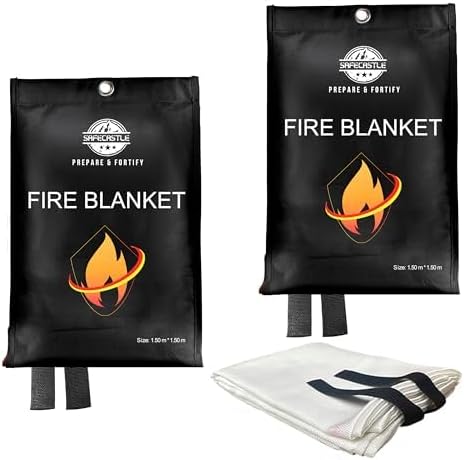
Buy SAFECASTLE Fire Blanket Emergency Survival Kit with 3 Combo Offers for ultimate fire preparedness.
Kindling: Pencil-thin pieces of wood used to nurture a fire to a reliable blaze.
Tinder: Ultrafine dry material used for starting a fire.
Hypothermia: A dangerous condition that can lead to death. It occurs when the body's core temperature falls below normal due to being in cold and wet environments. It is also known as exposure sickness.
layering: refers to wearing multiple thin garments, stacked one on top of the other. It's considered the most effective way to dress for cold weather.
Ferrule: A metal tube or sleeve that connects sections of fiberglass tent poles. These ferrules create a joint between the poles.
Space Blanket: A Mylar-coated blanket used in survival kits, providing warmth and waterproof protection.
Miscellaneous Gear
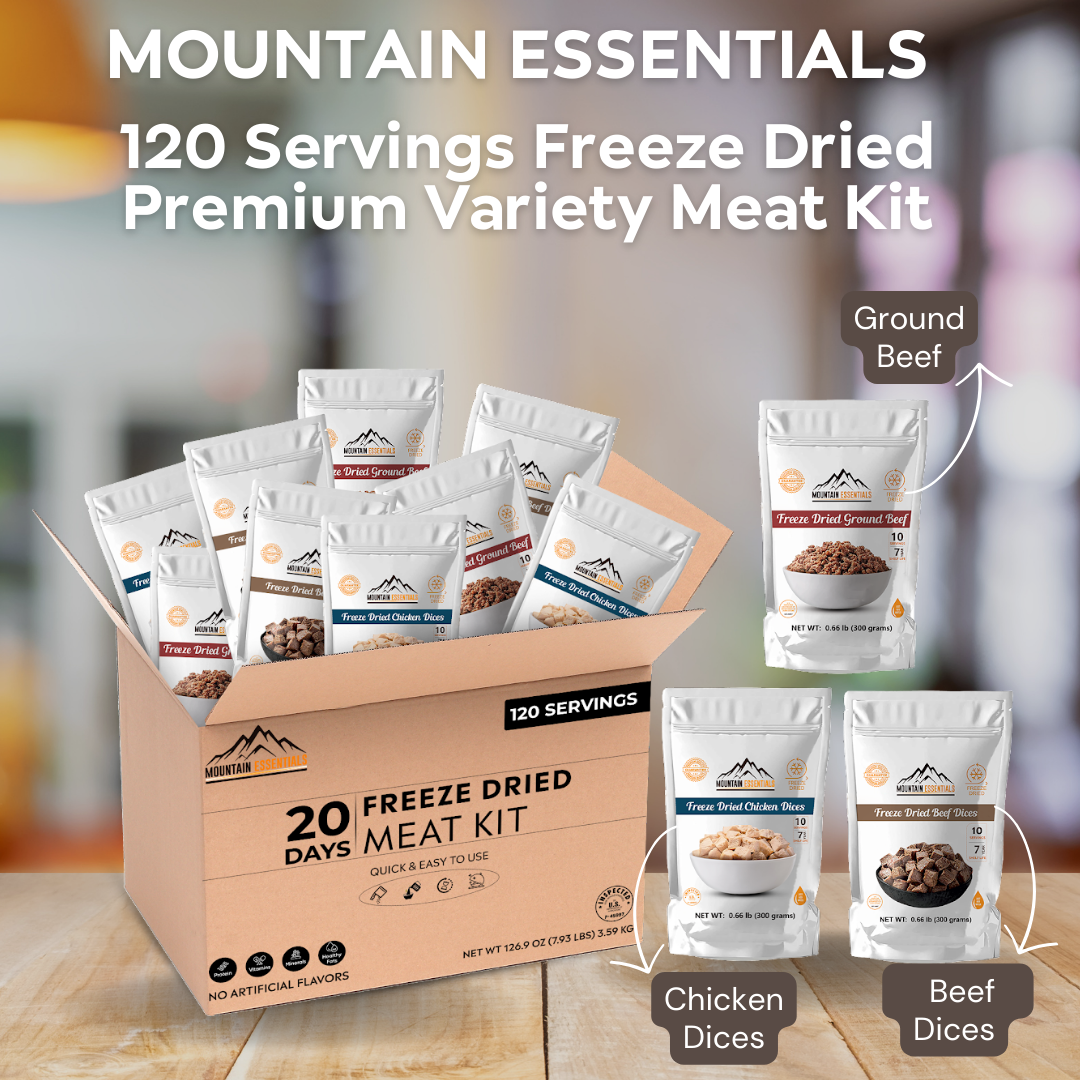
Buy Mountain Essentials 120-Serving Freeze-Dried Meat Kit (Pack of 12)
Fanny Pack: A small, zippered nylon pack attached to a waist belt.
Frame Pack: A backpack with an exterior aluminum or fiber framework.
Internal Frame Pack: A hiking pack with internal stays for better shape and comfort than traditional soft packs.
Duluth Pack: A voluminous, envelope-style canvas pack popular with canoeists.
Pack Basket: With a rich history, pack baskets are traditionally woven from black ash splints by Native Americans. Still popular today, especially in New England, you can even find them at L.L. Bean. Perfect for activities like berry picking, picnics, canoe trips, and car camping, these sturdy baskets safeguard your fragile items. Plus, they're a budget-friendly alternative to fabric packs.
Pelican Case: Hard plastic, waterproof cases are available in various shapes and sizes and are ideal for protecting sensitive equipment.
Trenching: refers to digging a shallow ditch around a tent. This was once a common way to divert rainwater, but it's no longer necessary. Modern tents come with built-in floors and campers can use ground cloths for added protection. Trenching is also prohibited in most wilderness areas,
Stuff Sack: A nylon bag with a drawstring closure for storing sleeping bags and other gear.
Svea Stove: A brand name for a popular type of compact, reliable camping stove.
Tingleys: Brand name for rubber boots that slip over shoes, offering excellent grip and durability.
Topo Map: A topographic map showing the lay of the land with contour lines.
White-print Map: A provisional map similar to a blueprint, showing up-to-date details like logging and mining roads.
Tumpline: simple yet effective tool for carrying heavy loads. Voyageurs, known for their fur trade routes, relied on tumplines to haul hundreds of pounds. Today, this traditional carrying method persists in the design of canvas Duluth packs, favored by wilderness canoeists.
Sternum strap: This short nylon band bridges the shoulder straps of your backpack. When adjusted correctly, it helps distribute the pack's weight across your chest, taking some pressure off your shoulders.
Bushwhack one's way out - This directly expresses the action of forcing your way through dense vegetation.
Fisherman's shirt: A long, calf-length version of a cagoule, but without a drawstring at the hem.
Blousing Bands: Elastic bands secure pant-leg bottoms around boots, which help keep out insects like mosquitoes and black flies.
Cord Lock: A spring-loaded nylon clamp to secure drawstring closures on stuff sacks.
Filling Power: A sleeping bag's thickness (or loft) when lying flat and fluffed, indicating its warmth.
Spreader Bar: A wand used for spreading out a portion of a tent.
Storm Flap: A panel backing the zipper of a parka, preventing wind and rain from penetrating.
Quick-release Knot: There are knots designed for easy removal with a tug on the end, called the "tail." One such knot you might already know is the bow knot, commonly used to tie your shoelaces.
They are used to tie tarps or secure loads.
This guide should equip you with the knowledge to navigate the world of camping and hiking confidently.


